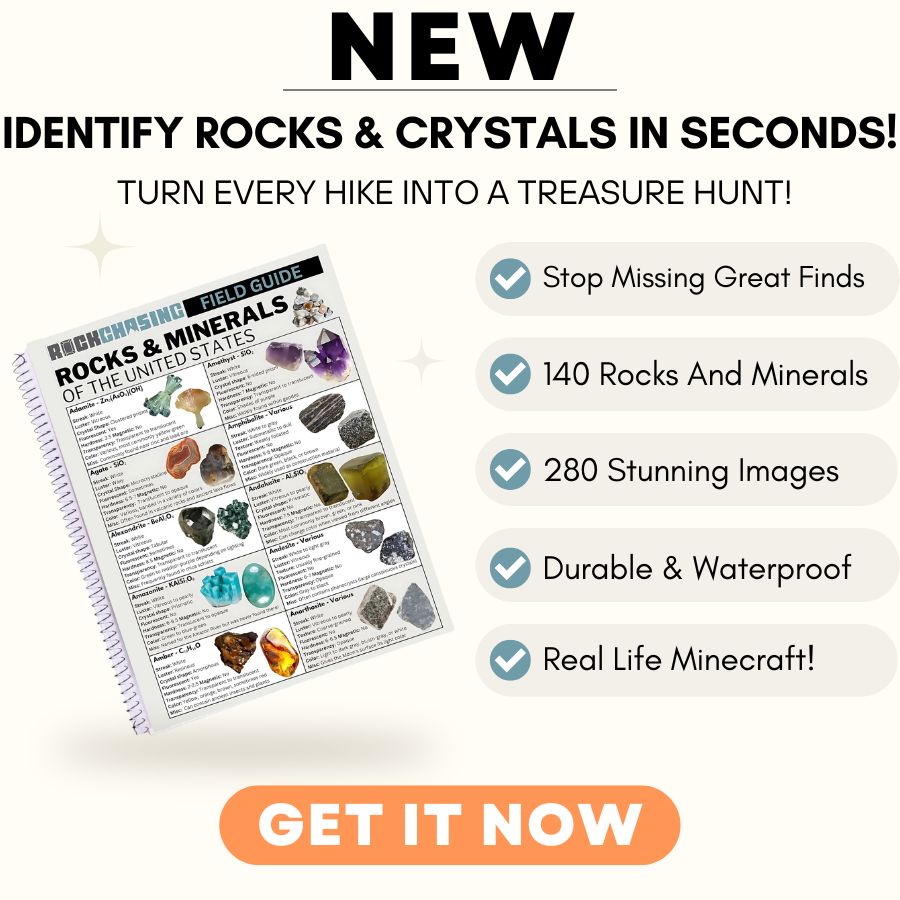Florida’s swamps and riverbeds have more than just gators and ancient fossils. Hidden beneath its sandy soil, you can find something that looks like real gold. Nicknamed “Fool’s Gold,” pyrite has fooled many treasure hunters over the years.
Some of the best places to spot pyrite in Florida are old phosphate mines and riverbanks. These areas, rich in fossils and minerals, often hold beautiful golden chunks of pyrite waiting to be discovered. If you know where to look, you might even find perfectly formed crystal cubes.
From the Peace River to certain Tampa Bay spots, Florida offers plenty of places to search. Whether you’re rockhounding for fun or hoping to add a golden sparkle to your collection, this guide will help you find the best locations.
How Pyrite Forms Here
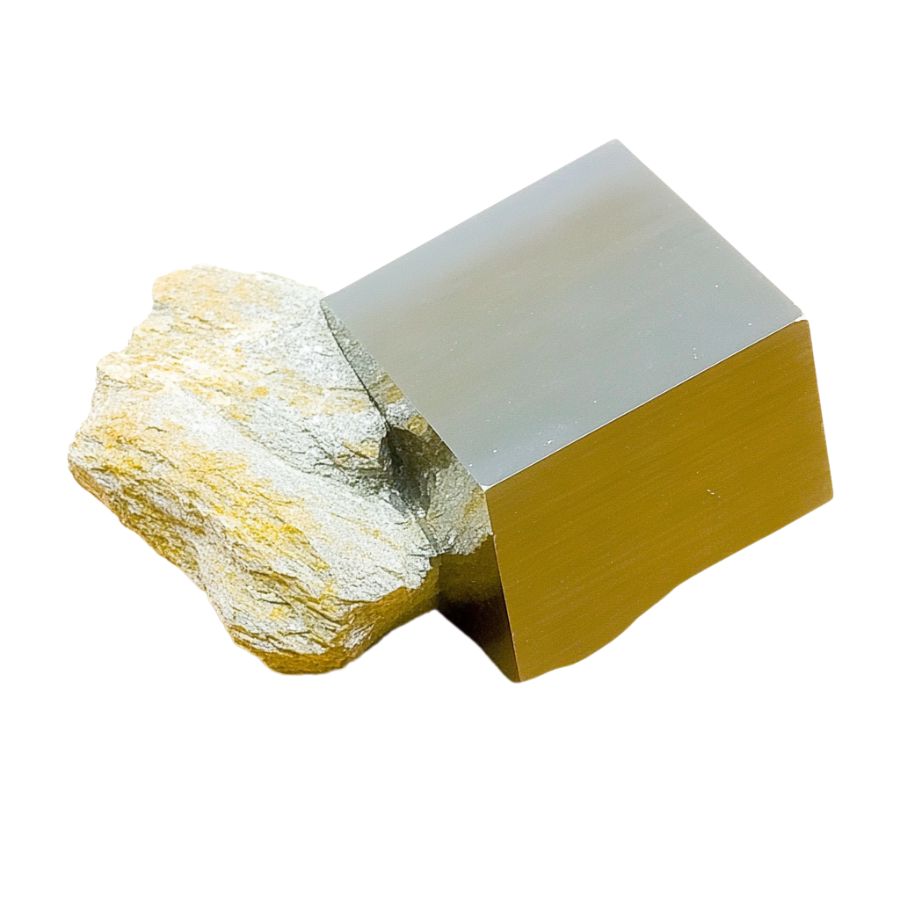
Pyrite forms when iron and sulfur combine in oxygen-poor environments, like deep in ancient seas or swamps.
The magic happens when iron-rich water meets sulfur-producing bacteria – these tiny organisms actually help create the perfect conditions for pyrite to grow!
As the bacteria break down organic matter, they release sulfur, which quickly bonds with the iron. Over time, these elements crystallize into pyrite’s distinctive cubic shapes at fairly low temperatures.
Sometimes, it forms slowly, replacing dead plants or sea creatures bit by bit, preserving their shapes as perfect golden fossils. The more pressure and heat, the bigger and more perfect the crystals become.
Types of Pyrite
Pyrite comes in several distinct forms and shapes, each with its own unique characteristics. Knowing these different varieties will help you identify what you’ve found.
Cubic Pyrite
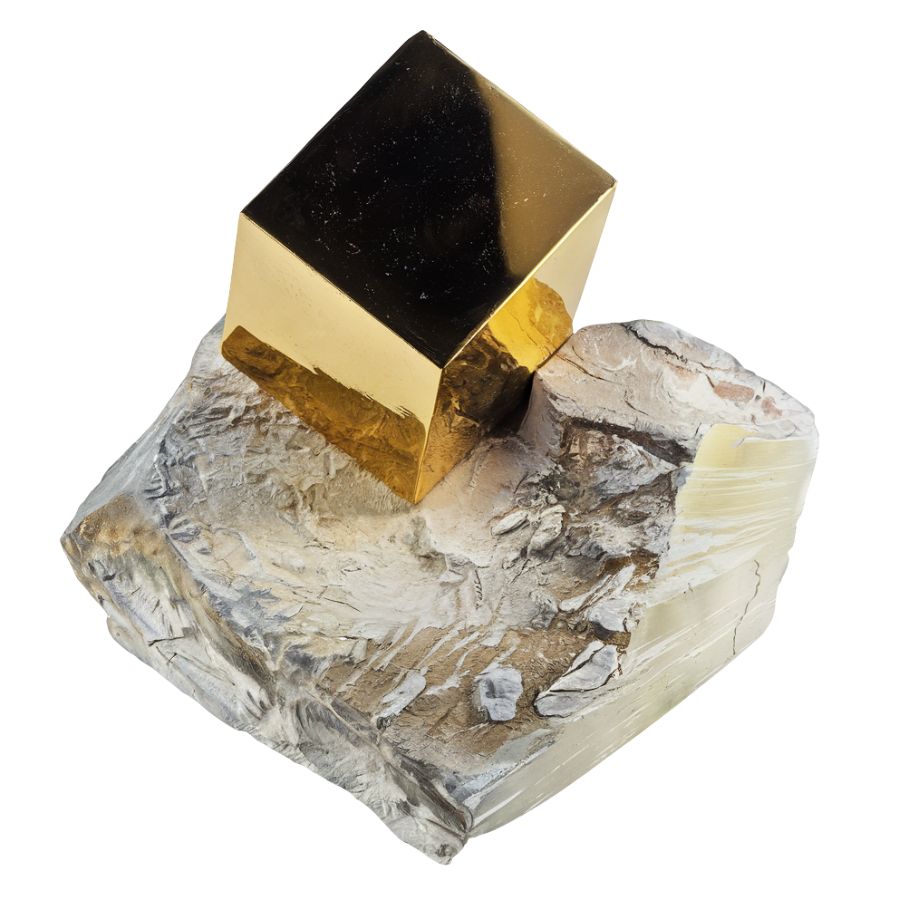
Cubic Pyrite showcases perfect cube-shaped crystals with sharp, well-defined edges and corners. While the classic form is golden, Cubic Pyrite can also appear in shades of brown or green.
What’s fascinating about Cubic Pyrite is how the crystals often cluster together, creating stunning geometric patterns. Sometimes, smaller cubes grow on larger ones, forming complex arrangements that collectors particularly value.
These specimens often develop alongside other minerals, which can create striking contrast effects.
Some pieces display interesting growth patterns where cubes appear to be stacked or intergrown with each other, creating unique architectural-like formations that make each specimen special.
Cathedral Pyrite
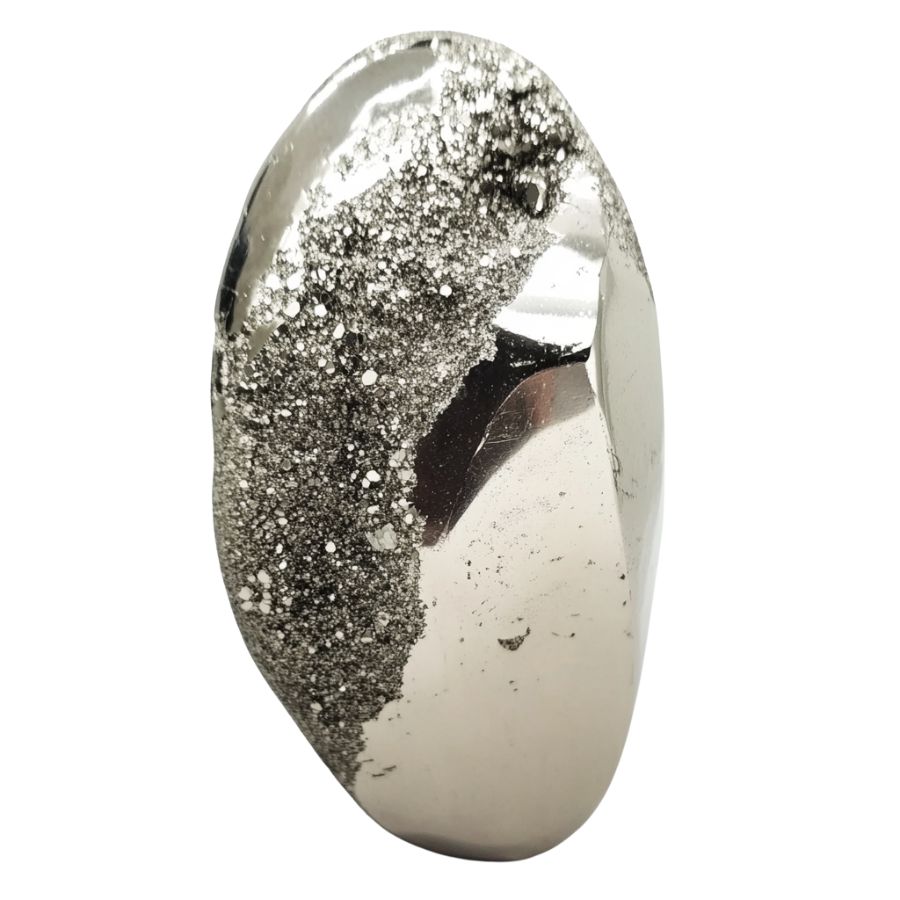
Cathedral Pyrite displays intricate surface patterns that look like delicate etchings or gothic window designs. The surface typically shows a bright, metallic luster that enhances these unique patterns.
It exhibits a combination of cubic and modified dodecahedral forms, which contribute to its unique appearance.
The crystal’s surface features result from natural etching processes during formation. This creates deeper grooves and raised areas that form symmetrical patterns.
Most specimens show variations in the depth and complexity of their etchings. Some areas might have fine, detailed patterns while others show broader, more pronounced features.
Pyrite Sun

Pyrite Sun forms in flat, disc-shaped specimens with radiating patterns that spread from the center outward. These pieces look like metallic sunbursts, with lines extending in all directions.
The radiating pattern is actually made up of countless tiny crystals arranged in a circular formation. This arrangement creates a natural symmetry that makes each piece look like a golden medallion or ancient sun symbol.
These specimens sometimes develop with interesting surface textures. Some pieces show subtle ridges along the radiating lines, while others might have a slightly bumpy texture.
The flat shape of the Pyrite Sun makes it distinctly different from other pyrite formations.
Pyritohedral Pyrite
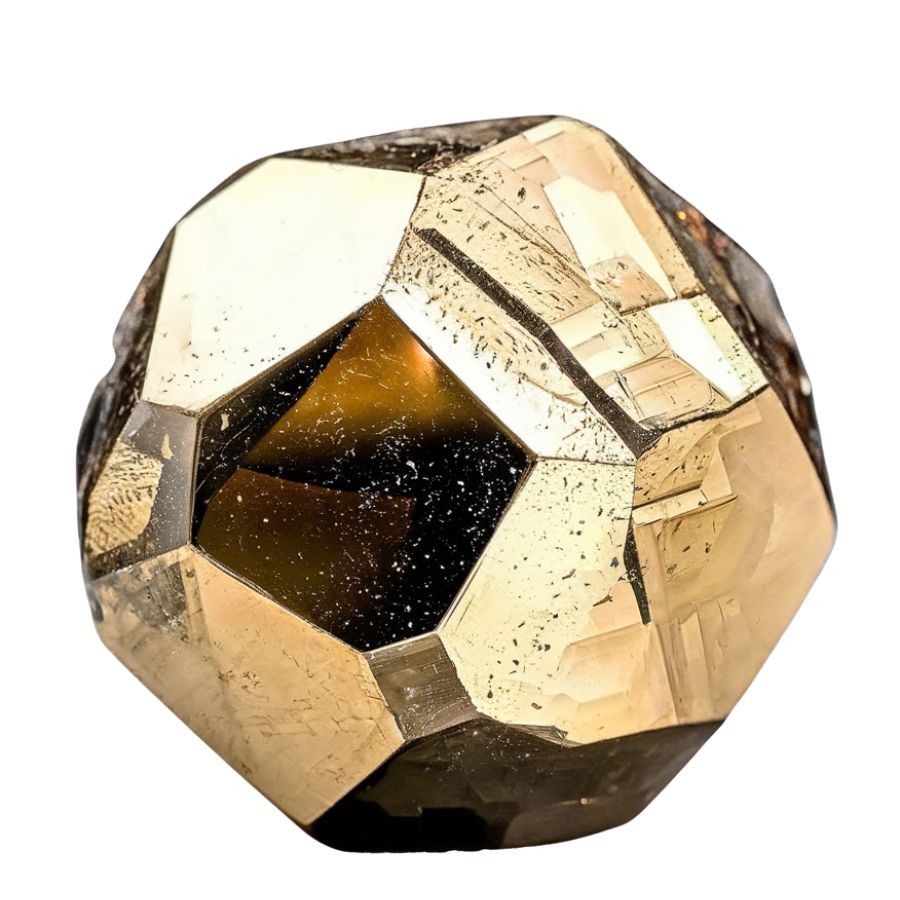
Pyritohedral Pyrite forms in unique twelve-sided shapes called pentagonal dodecahedra. Each face is a perfect pentagon. The crystals show the same bright, metallic golden color typical of pyrite, but in this distinctive shape.
Large single crystals of Pyritohedral Pyrite are particularly impressive. They can form either as individual crystals or in groups, sometimes creating interesting clusters where multiple dodecahedral shapes grow together.
One of the unique aspects of pyritohedral pyrite is its crystallography, which shows striated surfaces conforming to its pyritohedral symmetry.
Additionally, pyrite can form complex intergrowths known as framboids, which resemble raspberry-like clusters, adding to its visual appeal.
Rainbow Pyrite
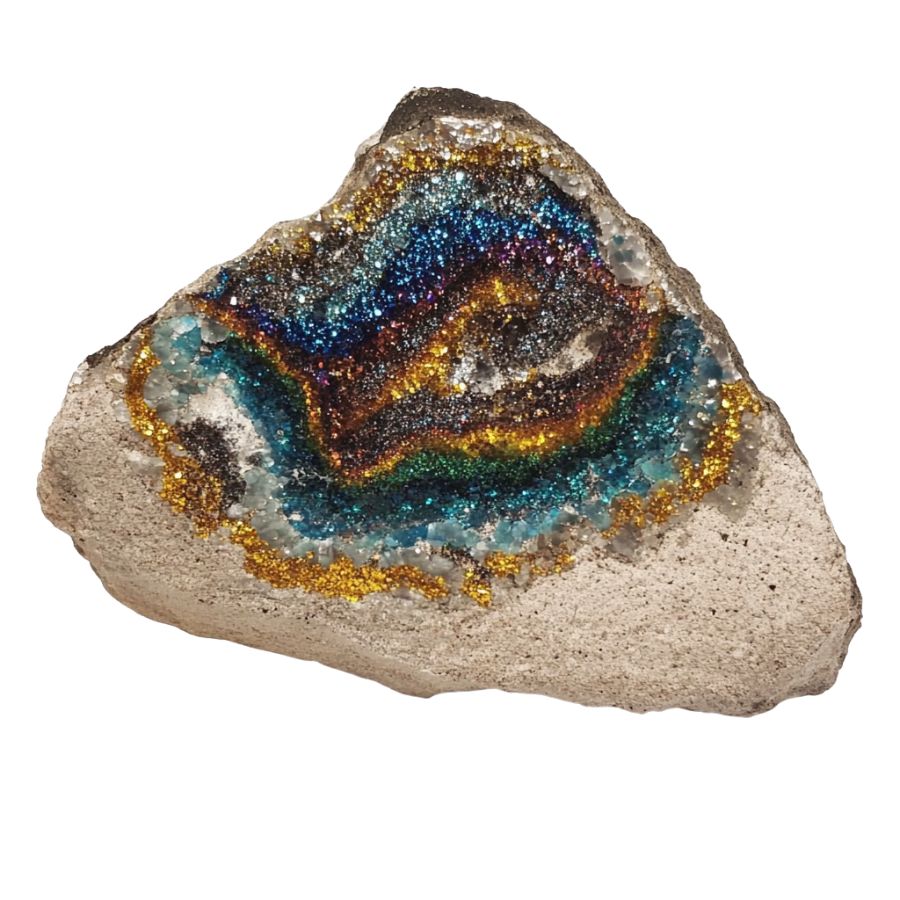
Rainbow Pyrite displays stunning iridescent colors that shimmer across its surface. These colors range from bright blues and greens to purples and pinks, creating a peacock-like effect. The colors change and shift as you move the stone, making each viewing angle unique.
The iridescent effect comes from a thin layer of oxidation on the surface. The base crystal usually maintains its metallic shine underneath these colorful patterns.
The intensity of colors varies between specimens, with some showing bold, vivid hues while others display more subtle tints.
The variability in color and pattern also adds to its allure. Additionally, it is considered a type of druzy, which refers to a layer of tiny crystals coating another rock, further enhancing its desirability among rockhounders.
Navajún Pyrite
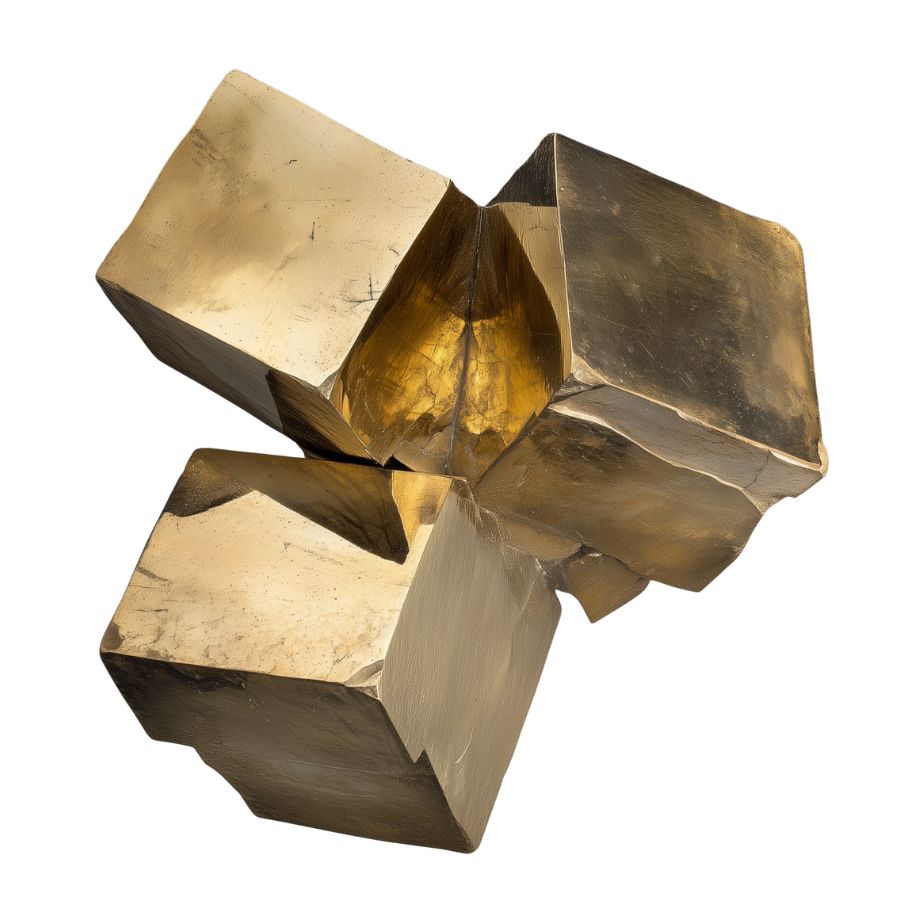
Navajún Pyrite forms perfect, sharp-edged cubes that seem almost man-made in their precision. These cubes have mirror-like surfaces. Their edges are remarkably crisp and well-defined.
The cubes can range from tiny specimens to impressive large crystals several inches across.
The conditions in Navajún have been optimal for millions of years, resulting in some of the largest and most intricate pyrite clusters found globally. The region’s geology allows for a high density of pyrite, with estimates reaching up to 100 kg per cubic meter.
A unique feature is the thin, soft coating that naturally preserves these crystals. This coating helps protect the sharp edges and brilliant surfaces from damage. When carefully removed, it reveals the pristine crystal faces underneath.
Octahedral Pyrite
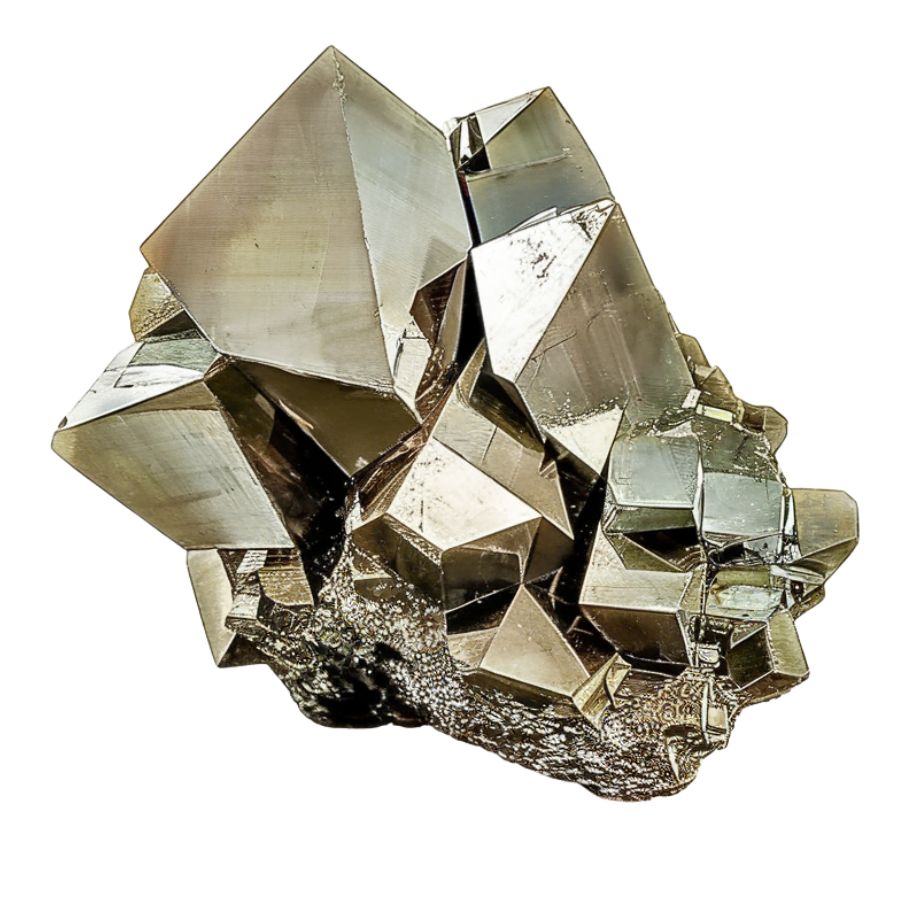
Octahedral pyrite crystals are characterized by their eight triangular faces, which belong to the {111} family of crystal facets. This octahedral form is less common than the cubic shape but is still prevalent in nature.
The faces of these crystals are typically smooth and free from the striations commonly seen on cubic pyrite.
They show a bright, metallic golden color that’s particularly striking when light hits the triangular surfaces. Some crystals develop interesting modifications where additional small faces appear at the edges or corners.
The formation of these octahedral crystals depends on specific growth conditions. Sometimes they combine with other crystal forms, creating more complex shapes that show both octahedral and cubic faces on the same specimen.
Striated Pyrite
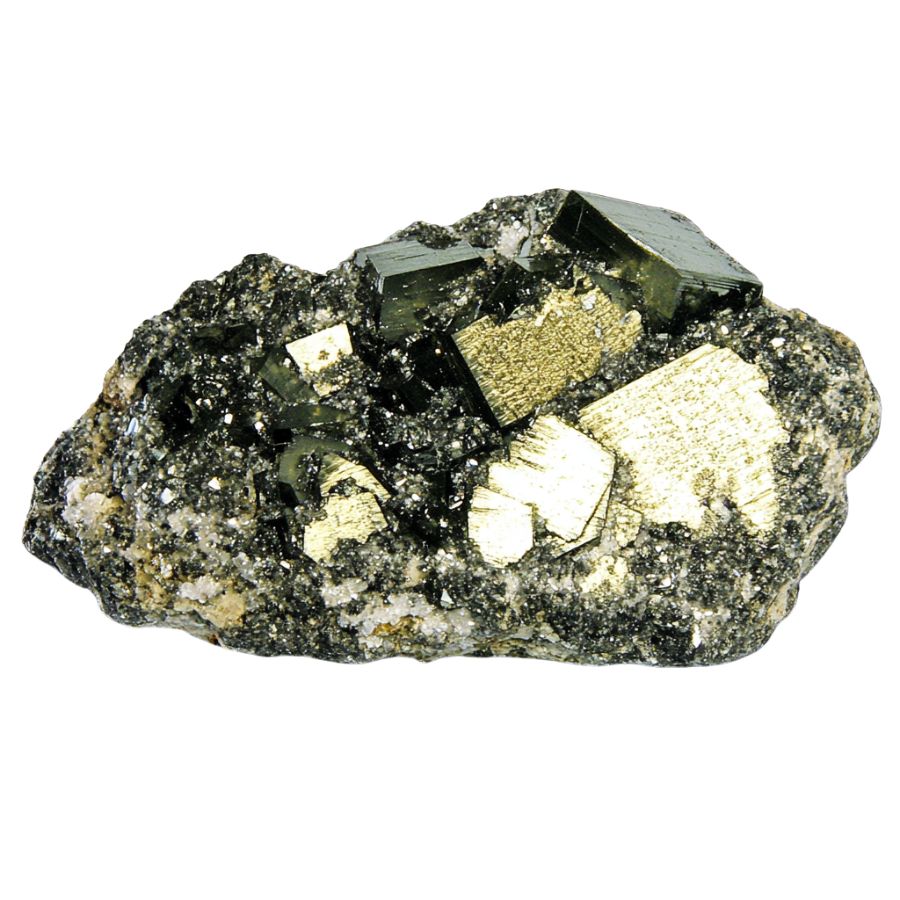
Striated Pyrite features distinctive parallel lines etched across its crystal faces. The lines can be fine and delicate or more pronounced, creating various surface patterns.
It typically forms in well-defined shapes, including cubic, octahedral, and pyritohedral forms.
The striations often run in specific directions on each crystal face. This creates an organized appearance, where the lines on adjacent faces meet at specific angles. The overall effect makes the crystal surface look like it’s been carefully engraved.
Some specimens show multiple sets of striations that cross each other, creating grid-like patterns. The depth and spacing of these lines vary between specimens. The striated surface maintains the crystal’s metallic golden color while adding visual complexity.
What Rough Pyrite Looks Like
Pyrite, often called “Fool’s Gold,” has some distinctive features that make it stand out. Here’s how you can spot rough pyrite even if you’re new to rocks and minerals.
Look for the Classic Brassy-Yellow Color
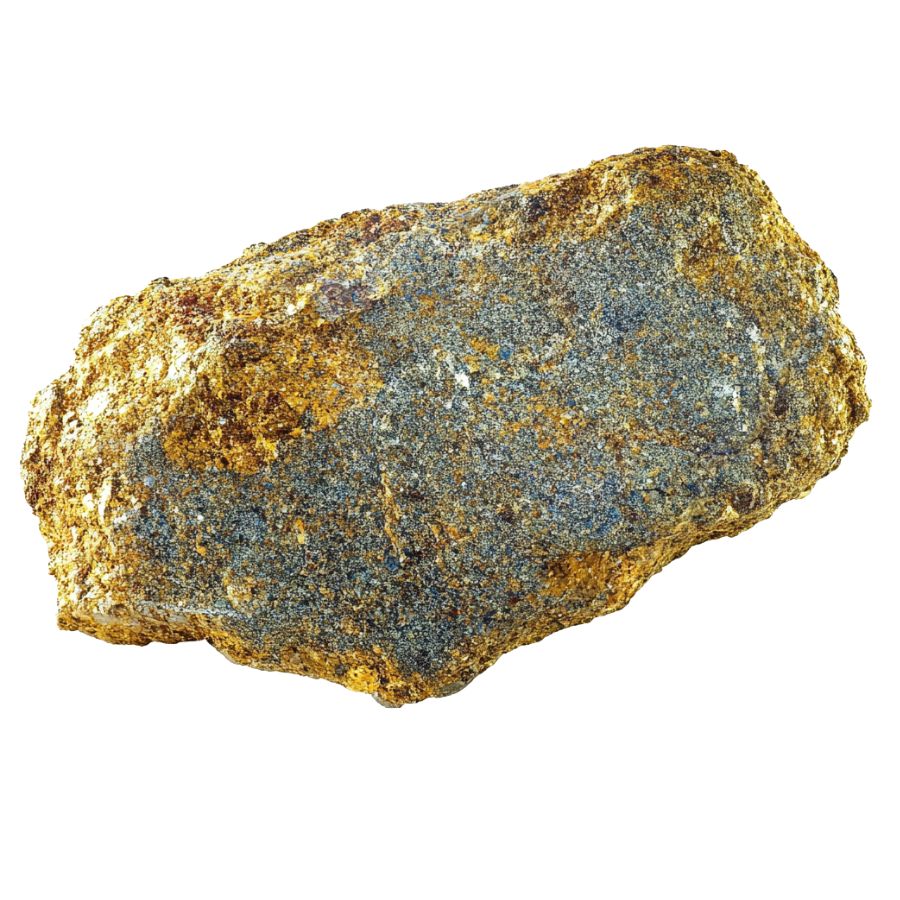
The most obvious giveaway is pyrite’s metallic, brassy-yellow color. But don’t be fooled by its gold-like appearance! Unlike real gold, pyrite has a more pale, silvery undertone.
If you tilt it under light, you’ll notice it’s less warm and rich than genuine gold. Sometimes, it might show tarnish spots with rainbow-like colors – that’s another clue you’re looking at pyrite.
Check the Crystal Structure
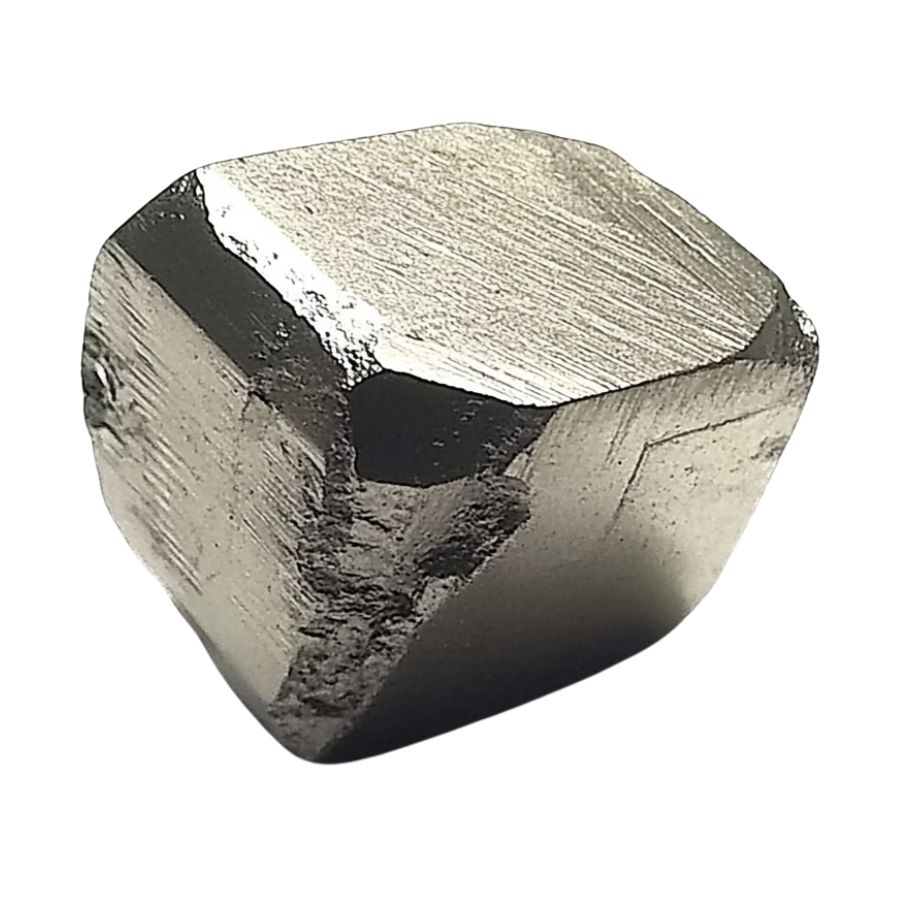
Raw pyrite typically forms in cubic or octahedral shapes – think dice-like cubes or eight-sided formations.
Even in rough chunks, you can spot these geometric patterns. Look for flat surfaces meeting at sharp angles.
Sometimes, you’ll see striations (parallel lines) on the crystal faces, which is super characteristic of pyrite. Gold never forms such crisp, angular shapes.
Test the Hardness and Brittleness

Here’s a cool trick: try scratching pyrite with a nail. Unlike soft gold, pyrite’s pretty hard (6-6.5 on Mohs scale) and will resist scratching.
It’s also brittle – if you manage to break a piece, it’ll have an uneven, jagged fracture. Gold, on the other hand, is soft and malleable, more likely to bend than break.
Examine the Surface Texture
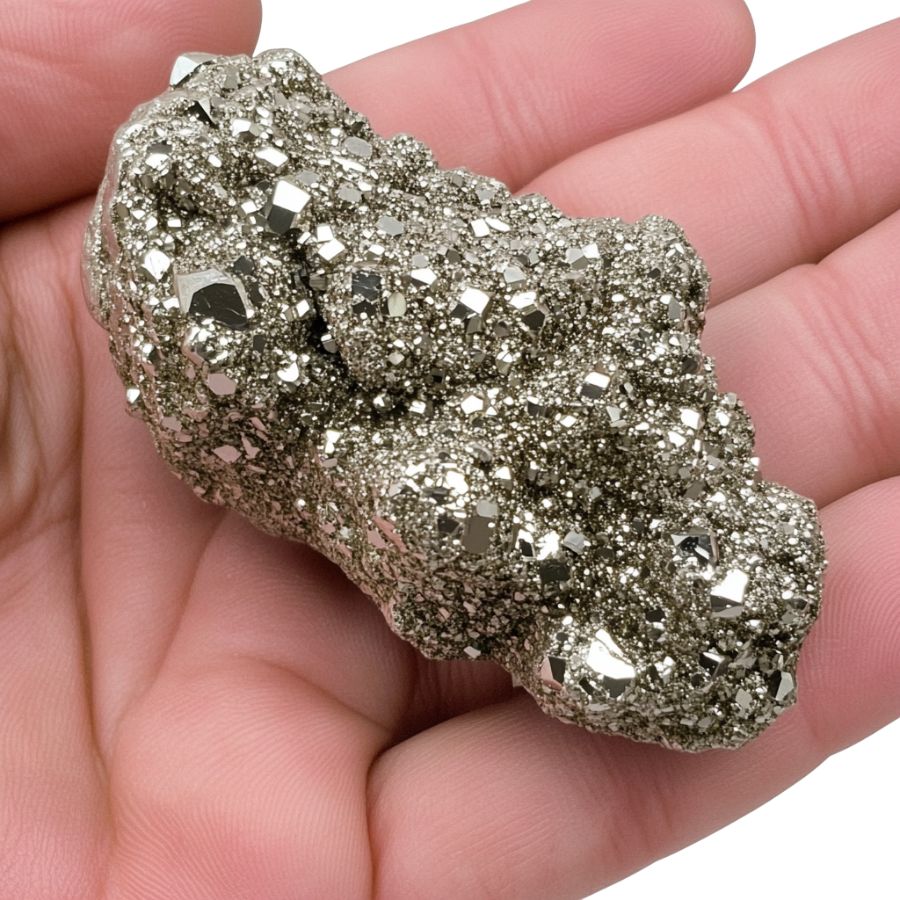
Run your fingers over rough pyrite. Feel those sharp edges and rough surfaces? That’s typical. Look for a surface that’s almost sparkly. Fresh breaks often reveal a bright, metallic luster.
Sometimes you’ll spot tiny crystal faces catching light from different angles – kind of like miniature mirrors reflecting sunlight.
A Quick Request About Collecting
Always Confirm Access and Collection Rules!
Before heading out to any of the locations on our list you need to confirm access requirements and collection rules for both public and private locations directly with the location. We haven’t personally verified every location and the access requirements and collection rules often change without notice.
Many of the locations we mention will not allow collecting but are still great places for those who love to find beautiful rocks and minerals in the wild without keeping them. We also can’t guarantee you will find anything in these locations since they are constantly changing.
Always get updated information directly from the source ahead of time to ensure responsible rockhounding. If you want even more current options it’s always a good idea to contact local rock and mineral clubs and groups
Tips on Where to Look
Pyrite is pretty common and can be found in many places. Here are some locations where you’re likely to spot these shiny golden cubes.
Sedimentary Rock Areas
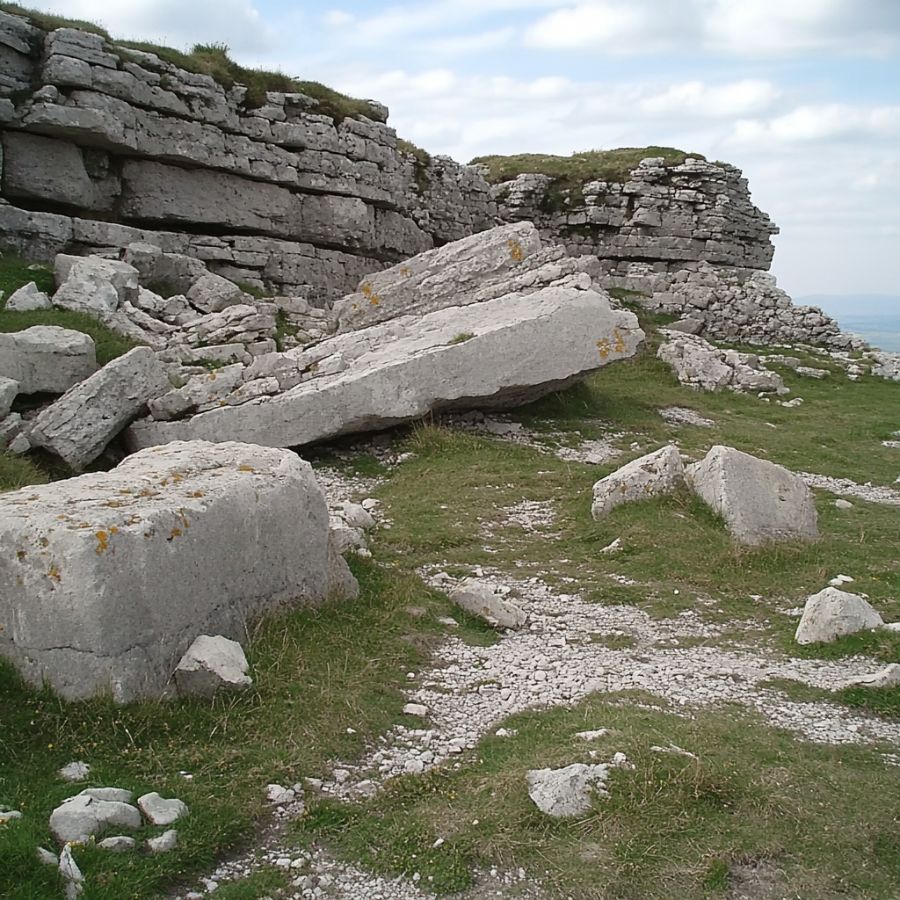
Look for dark shale or limestone outcrops. These rocks often have pyrite chunks embedded in them. Check cliff faces and road cuts where these rocks are exposed. The darker the sedimentary rock, the better your chances.
Sometimes, you’ll find perfect little cubes just sitting there in the rock matrix, waiting to be discovered after millions of years of formation in these ancient sea beds that have transformed into solid rock formations over time.
Old Mining Sites
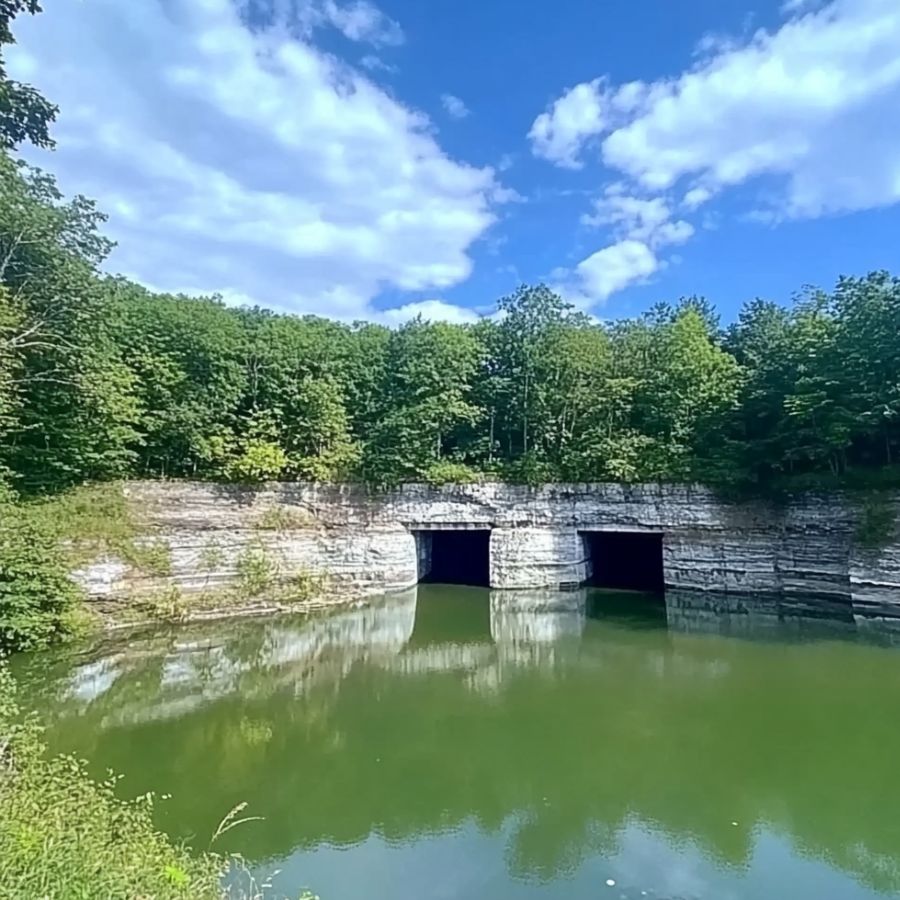
Search around abandoned quarries that are open to the public. Focus on areas where they mined coal or metal ores. Pyrite often shows up in mine dumps and tailings piles.
Look through the scattered rocks – pyrite’s metallic shine makes it easy to spot. Bring a spray bottle with water to wet rocks. Makes pyrite stand out better.
Stream Beds
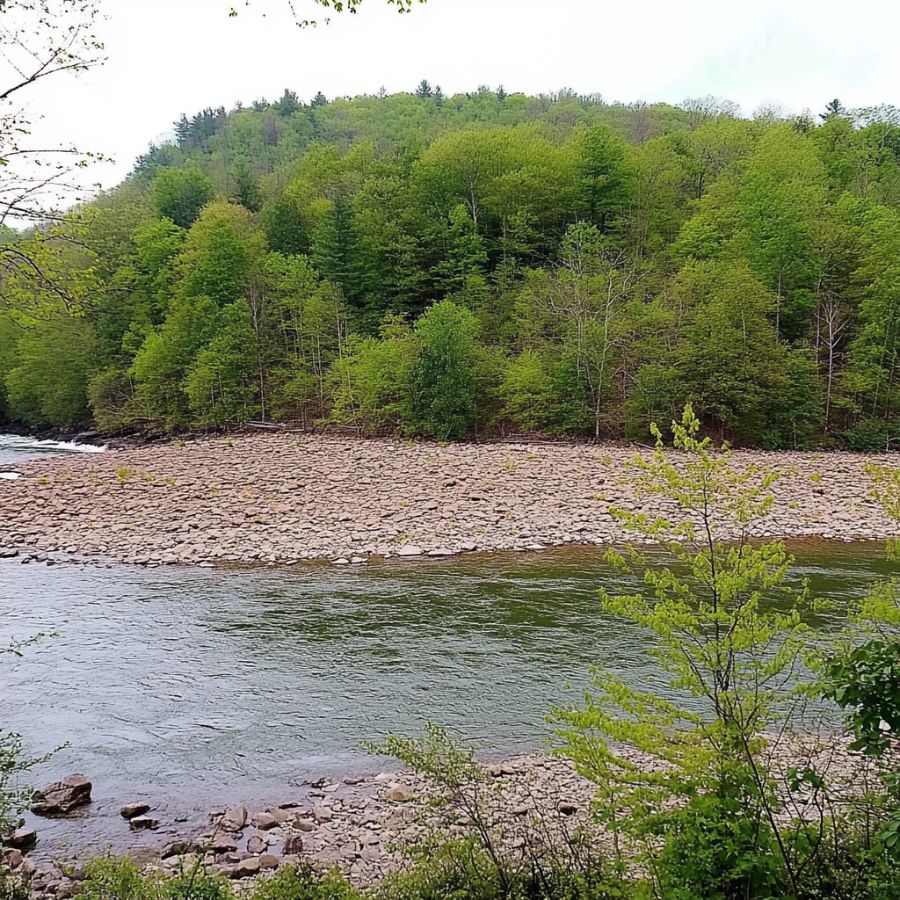
Check gravel bars in streams. Look where water slows down. Dark sand patches often contain tiny pyrite bits. Dig a few inches deep in stream gravels.
Use a gold pan – pyrite is heavy and sinks like gold. Best after rain when fresh material gets exposed.
Clay Banks
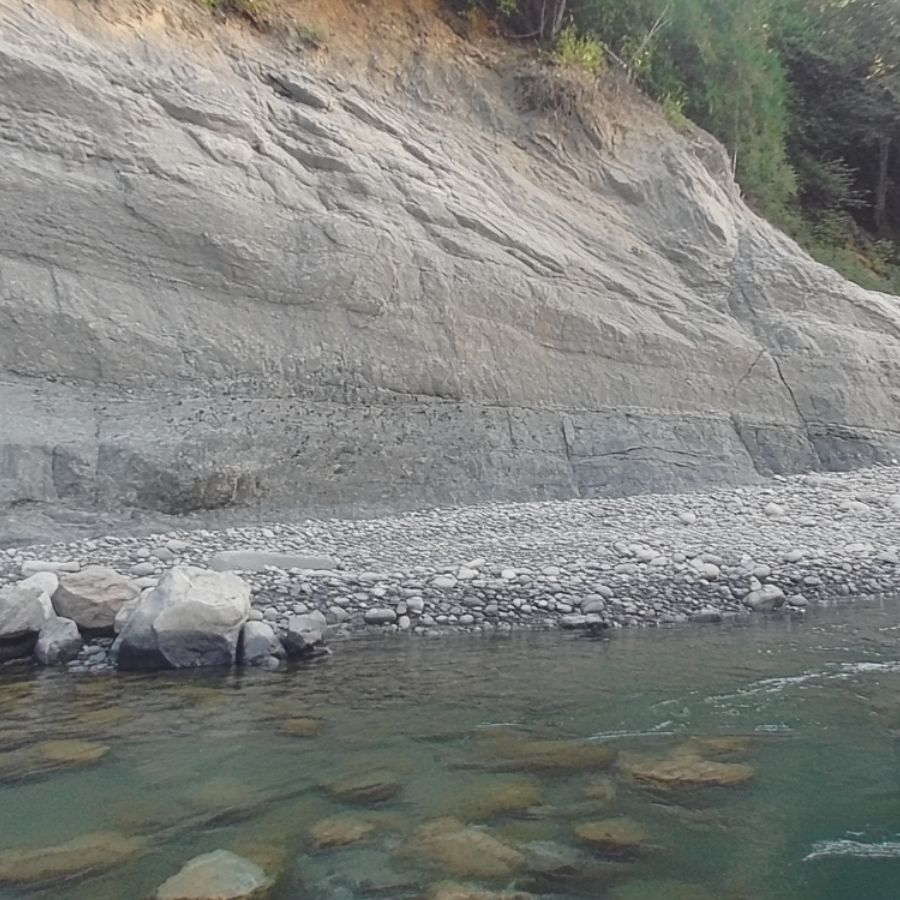
Hunt along eroded clay banks. Pyrite forms in clay deposits. Check areas where clay is gray or blue. Break open clay chunks – pyrite forms inside.
Look for rusty stains – good indicator. These spots often have pyrite crystals weathering out of the clay. Easier to spot on sunny days when crystals glitter.
Some Great Places To Start
Here are some of the better places in the state to start looking for Pyrite:
Always Confirm Access and Collection Rules!
Before heading out to any of the locations on our list you need to confirm access requirements and collection rules for both public and private locations directly with the location. We haven’t personally verified every location and the access requirements and collection rules often change without notice.
Many of the locations we mention will not allow collecting but are still great places for those who love to find beautiful rocks and minerals in the wild without keeping them. We also can’t guarantee you will find anything in these locations since they are constantly changing.
Always get updated information directly from the source ahead of time to ensure responsible rockhounding. If you want even more current options it’s always a good idea to contact local rock and mineral clubs and groups
Southdown Limestone Quarry

Southdown Limestone Quarry is located in Citrus County, Florida. This active quarry, primarily known for mining high-quality limestone, has also yielded impressive mineral specimens, including golden pyrite cubes.
The quarry’s sedimentary rock formations, dating back millions of years, provide the perfect conditions for pyrite to form in well-defined crystal structures.
Collectors often find pyrite embedded within limestone rock or in loose gravel around excavation sites. The best way to collect pyrite here is by carefully examining broken rock surfaces or cracking open limestone chunks to see if there are sparkling metallic crystals inside.
Ruck’s Pit
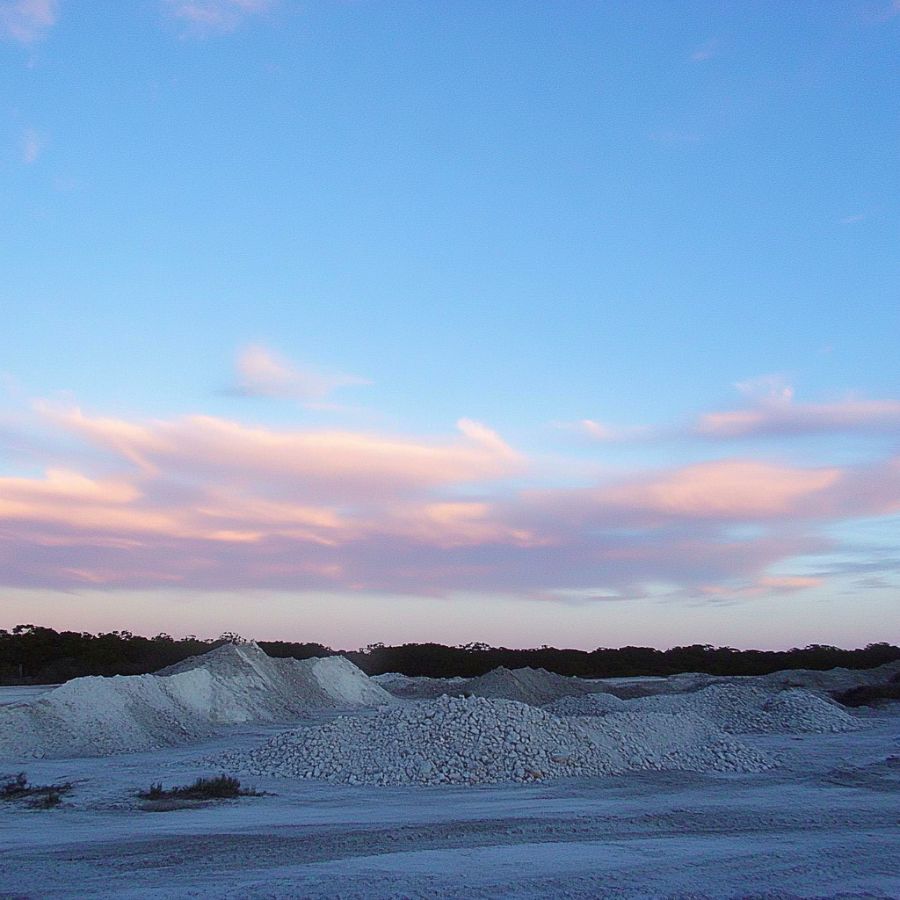
If you’re searching for pyrite in Florida, Ruck’s Pit in Okeechobee County is a must-visit spot. What makes this location truly special is its unique fossilized clam shells filled with dazzling golden pyrite and calcite crystals. Over millions of years, these minerals replaced the original shell material, creating stunning natural geodes.
The best part? This former shell rock quarry is open to the public for digging, making it one of the few places where rockhounds can hunt freely.
The most effective way to find pyrite here is by breaking rocks open or searching through freshly dug material left by excavators. A small hammer and chisel come in handy for extracting intact specimens.
Beyond pyrite, collectors often uncover beautiful honey-colored calcite crystals.
Clear Spring Mine

Located in the heart of Polk County, the Clear Spring Mine is a lesser-known but rewarding spot for rockhounds looking for pyrite.
This abandoned phosphate mine once played a significant role in Florida’s phosphate industry, and its mineral-rich layers still hold treasures waiting to be discovered.
Pyrite can be found here in small, well-formed cubic crystals, often embedded within phosphate-rich rock or mixed with clay deposits. The best way to search is by scanning eroded rock piles or gently breaking apart soft sedimentary formations.
Peace River
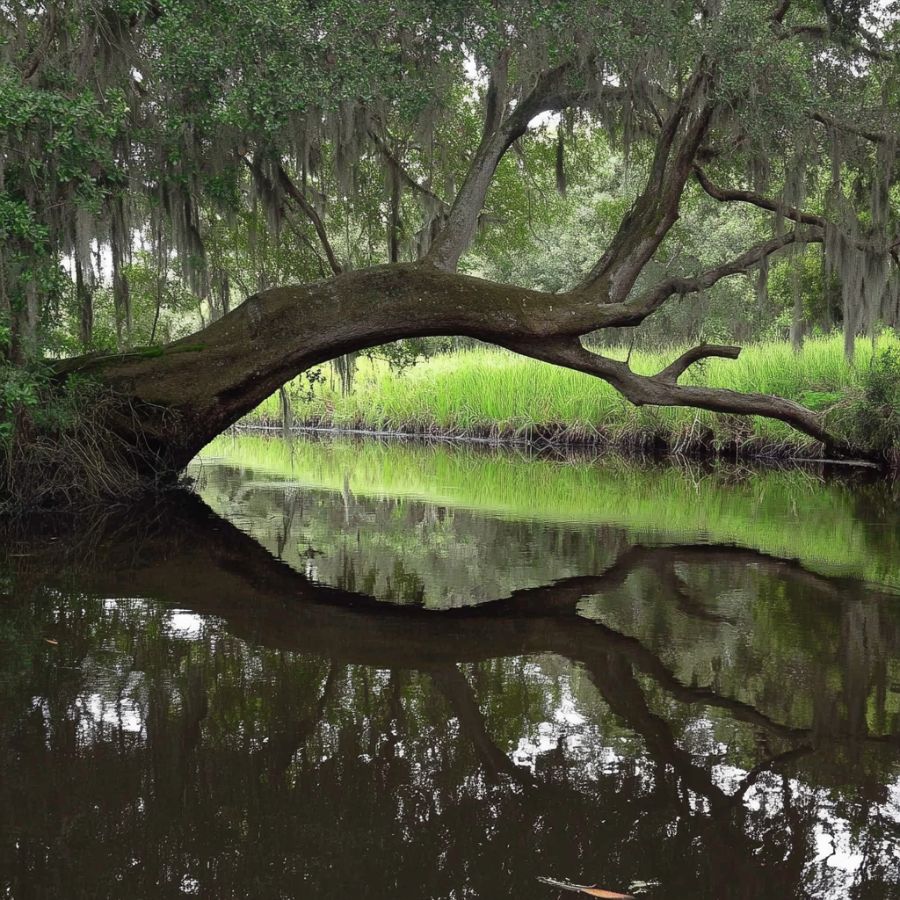
The Peace River in DeSoto County is a favorite among fossil hunters, but it also holds an exciting surprise for rockhounds—pyrite! This slow-moving river has carved its way through layers of ancient marine sediments, exposing a variety of minerals, including small pyrite nodules.
Pyrite is often found mixed in with gravel deposits along the riverbed. The best time to search is during the dry season when water levels are lower, revealing more gravel bars and making access easier.
Sifting through sand and sediment with a screen or hand-held sifter can help uncover small but brilliant pyrite pieces, sometimes alongside fossilized shark teeth or bone fragments.
Be prepared for a bit of adventure because digging in the river can get messy, but the rewards are worth it.
Places Pyrite has been found by County
After discussing our top picks, we wanted to discuss the other places on our list. Below is a list of the additional locations along with a breakdown of each place by county.
| County | Location |
| Polk | Agrico Pierce Mine |
| Hardee | Payne Creek Mine |
| Polk | Noralyn Phosphate Mine |
| Polk | Hookers Prairie Mine |
| Polk | Mulberry Phosphate Museum |
| Polk | Bone Valley Formation |
| Polk | IMC-Agrico Phosphate Mines |
| Hardee | CF Industries Phosphate Mines |
| Hamilton | PCS Phosphate Mines |
| Suwannee | Suwannee River |
| Madison | Withlacoochee River |
| DeSoto | Peace River |
| Hillsborough | Alafia River |
| Hillsborough | Hillsborough River |
| Alachua | Santa Fe River |
| Columbia | Ichetucknee River |
| Jefferson | Wacissa River |
| Jefferson | Aucilla River |
| Jackson | Chipola River |
| Franklin | Apalachicola River |
| Leon | Ochlockonee River |
| Taylor | Econfina River |
| Taylor | Steinhatchee River |
| Wakulla | Sopchoppy River |
| Wakulla | Wakulla River |
| Wakulla | St. Marks River |


